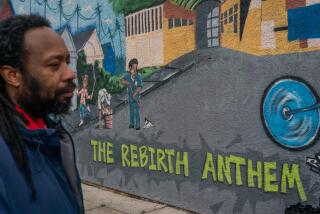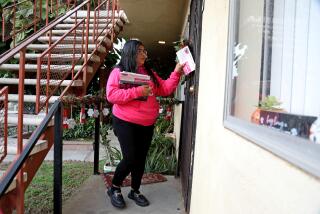Make ‘Watch’ Program Fit Your Neighborhood
- Share via
The concept of Neighborhood Watch centers on neighbors recognizing suspicious activities and reporting crimes to police. It has proven to be one of the most effective ways to reduce crime--from inner cities to suburbia, from farms to high-rise apartment buildings.
While Neighborhood Watch is often identified in the public mind as passively watching the street from behind the curtains, its value is much broader.
Once crime prevention groups begin serving as “eyes on the street,” they spot all types of criminals. Through Neighborhood Watch techniques, neighbors can help police nab rapists, muggers, drug dealers, kidnapers or others who pose a danger to their safety. And, most important, they keep an eye out for each other.
Neighborhood Watch techniques can be an important--although not the only--element of an effective neighborhood group. It is important for your group to become organized and define your own projects first. Then learn about Neighborhood Watch and use it as one of the tools in your overall approach to making your neighborhood safer.
Your local police department will probably offer a great deal of support on Neighborhood Watch techniques. The department can often supply pamphlets, films or other materials on Neighborhood Watch. A police officer can meet with your group to train neighbors in recognizing and reporting crime.
One common police-sanctioned crime prevention program is Operation I.D., which involves inscribing a personal identification number, such as your driver’s license number, on your most valuable articles. To mark your property, you will need an electric engraving pen that will etch metal, wood, ceramic or plastic parts of property. You can purchase an electric engraver for $20 or so at a hobby shop or hardware store. In police-initiated Operation I.D. programs, participants advertise the fact that their property is marked by placing special decals in house windows.
In some parts of the country, when a neighborhood has a significant percentage of households signed up as neighborhood “watchers,” the police department or city will post signs proclaiming that the area is covered by Neighborhood Watch, Home Alert or whatever the local version of the program is called. Sometimes the signs have a large picture of an eye (for eyes on the street) next to the name of the program.
The signs may be available from the police department, or the neighborhood group may buy their own. Window decals or yard signs that match the street signs further identify households as watchers. The signs and decals are designed as one more visual deterrent to ward off criminals, much like a “Beware of Dog” sign or an alarm system sticker on a house.
More to Read
Sign up for Essential California
The most important California stories and recommendations in your inbox every morning.
You may occasionally receive promotional content from the Los Angeles Times.













